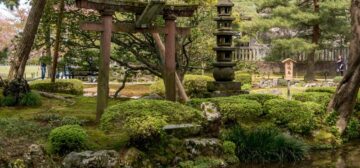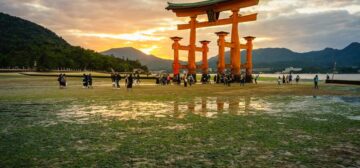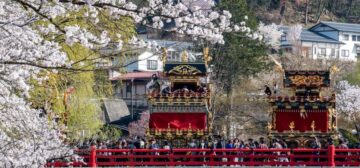If travelling to the area near the Fukushima nuclear accident it is advisable to take supplies of food and water. Produce from the area near the Fukushima nuclear accident, which is still being sold in some supermarkets nationwide, should be avoided due to the lack of a centralized testing system in Japan for radioactive contamination in food, and discrepancies between Japanese and international standards for safe levels of radioactive substances in food.Tap water in Tokyo was declared not safe for consumption after the accident, although the government has since stated otherwise. Nevertheless, if travelling with children it is advisable to take precautions. The Ministry of Health, Labour and Welfare website (www.mhlw.go.jp) has updates on contamination levels in tested food. In other parts of Japan, food and drink are generally considered safe.Only eat raw fish, seafood and meat from recognised establishments, and be aware that there is a risk of parasitic infection and toxins if these foods have not been prepared properly. E-coli food poisoning outbreaks tend to occur in Japan during the warmer months (June-September), and it is advisable to take precautions when consuming perishable foods at outdoor summer festivals, where refrigeration may be an issue.Japanese cuisine involves fresh, delicate flavours based on seasonal ingredients. Rice, miso (fermented soy bean) soup, tofu (soy bean curd), pickled vegetables and fish are the traditional staples of daily Japanese cuisine. Traditionally, meat was not eaten because of Buddhist beliefs. However, beef, chicken are now also staple ingredients. Fresh seafood is highly valued and Japanese will travel far to eat crab in winter, for example, and unagi (eel) in summer. The variety of ingredients, the intensive preparation methods, and the meticulous presentation found in Japanese cuisine is highly impressive.Sushi, pieces of raw fish on vinegared rice, has become synonymous with Japanese cuisine. The easiest place to try sushi is at a kaiten-zushi restaurant, where many varieties pass on a conveyor belt and diners can pick up what they fancy without any language difficulties, and at reasonable prices. More traditional sushi restaurants serve higher quality fish but also charge much higher prices.The most luxurious dining in Japan is kaiseki cuisine – a multi-course banquet that was originally intended to accompany the tea ceremony. Kaiseki cuisine is exquisitely presented, reflecting the aesthetics of the seasons and traditional ceramics. A typical banquet will begin with light appetisers and soups before progressing to various steamed, grilled and fried dishes, and ending with a simple rice dish.A variety of international restaurants are also available, catering for every taste and budget, from French and Italian to Chinese, Indian and Thai. Western dishes in expensive places are usually excellent, but cheaper diner-style restaurants may disappoint. While sake (rice wine) is still regularly served, beer is by far the most popular alcoholic beverage.Tips are never expected. In some upmarket places, a 10 to 15% service charge will be added to the bill. In some bars, there may be a table or “charm” charge too, which can be quite steep; it’s best to enquire in advance if you’re in any doubt.











